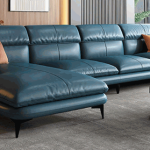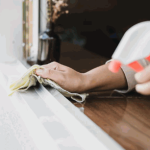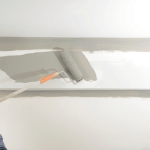Thinking about dyeing your leather couch to give it a fresh new look?
Before you do, it’s crucial to properly clean the couch to ensure the dye adheres evenly and effectively.
In this article, we will discuss why cleaning your leather couch before dyeing is essential, what materials you will need for the cleaning process, and step-by-step instructions on how to clean your leather couch.
We will explore the best cleaning solutions for leather couches and alternative methods you can use.
Let’s get started on making your leather couch look brand new!
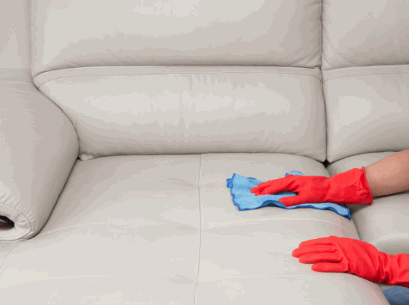
Why Should You Clean Your Leather Couch Before Dyeing?
Cleaning your leather sofa before dyeing is essential to ensure that the dye adheres properly and results in a smooth and even finish. Removing dirt, oils, and any existing finishes from the leather surface prepares it for the dyeing process, allowing for better absorption and colour retention.
By using a specialised leather cleaner, you can effectively eliminate deep-seated grime and residues that might interfere with the dye’s penetration. Not only does this crucial step facilitate a more uniform colour application, but it also enhances the overall longevity of the new hue on your cherished leather sofa.
Check out: Can You Dye Faux Leather Chairs
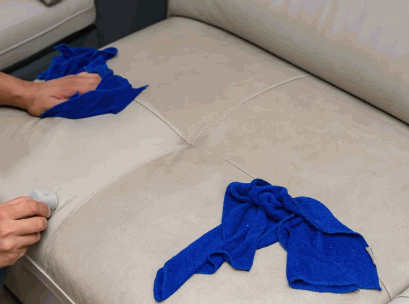
What Materials Do You Need To Clean Your Leather Couch?
To clean your leather sofa effectively, you will need specific materials such as a suitable leather cleaner, a soft cloth or sponge, and a leather conditioner. These products help remove dirt, stains, and oils from the leather surface while also conditioning and nourishing the leather to maintain its quality.
Leather cleaners are essential for breaking down and lifting away dirt and grime without damaging the leather. A soft cloth or sponge allows for gentle application and wiping to avoid scratching the surface during cleaning. Using a leather conditioner is crucial as it hydrates and restores the natural oils in the leather, preventing it from drying out and cracking. These materials work harmoniously to prepare your leather sofa for dyeing, ensuring a smooth and even finish.
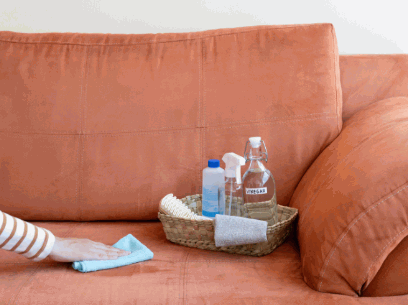
How To Clean Leather Couches Before Dyeing?
Cleaning leather settees before dyeing involves a series of steps to ensure thorough preparation of the surface. By following these steps, you can achieve optimal results in the dyeing process, leading to a refreshed appearance and colour change.
Step 1: Vacuum The Couch
- The first step in cleaning a leather settee before dyeing is to thoroughly vacuum the surface. Use a soft brush attachment to remove dust, dirt, and debris from crevices and seams, ensuring a clean starting point for the rest of the cleaning process.
Vacuuming leather settees serves as a crucial preliminary step in ensuring effective cleaning and maintaining their longevity. By using a gentle brush attachment during vacuuming, you not only eliminate surface dirt and debris but also prevent potential scratches and damage to the delicate leather material.
Regular vacuuming helps remove allergens and contaminants that can accumulate over time, maintaining a hygienic environment in your living space. This practice also prepares the leather surface for further treatments, such as conditioning or dyeing, ensuring optimal results.
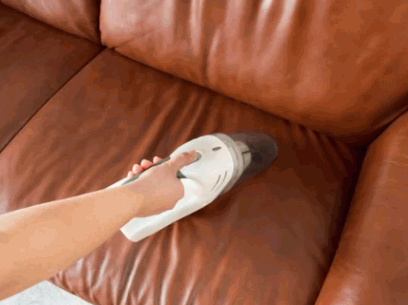
Step 2: Prepare The Cleaning Solution
Preparing the cleaning solution for your leather sofa involves diluting the appropriate cleaner with water according to the manufacturer’s instructions.
Mix the solution in a small bucket or container to ensure even distribution and effectiveness during the cleaning process.
Proper dilution ratios play a crucial role in maintaining the integrity of your leather sofa while effectively removing dirt and grime. It’s essential to thoroughly mix the solution to create a uniform blend that can efficiently tackle stains without causing damage.
Following the manufacturer’s guidelines guarantees that you’re using the right concentration for safe and efficient cleaning. Consistency in mixing ensures that every part of the sofa receives the intended cleaning benefits.
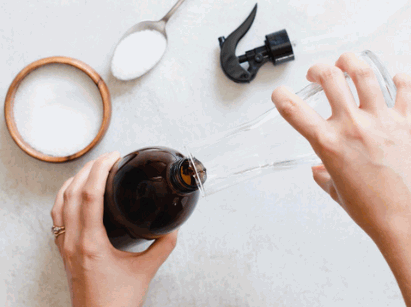
Step 3: Test The Cleaning Solution
Before applying the cleaning solution to the entire leather settee, it is crucial to perform a patch test on a small, inconspicuous area. This test ensures that the solution is safe and effective on your specific leather type without causing any damage or discoloration.
When conducting a patch test, start by selecting a discreet spot on the leather surface, such as the back or underside of the settee. Prepare a small amount of the cleaning solution following the manufacturer’s instructions. Apply a small dab of the solution to the chosen area using a clean, soft cloth or cotton wool swab.
Allow the solution to sit on the leather for the recommended time, typically as per the product’s guidelines. Check for any adverse reactions, such as discoloration, staining, or texture changes. If there are no negative effects after the specified time, proceed with confidence to clean the entire leather surface with the tested solution.
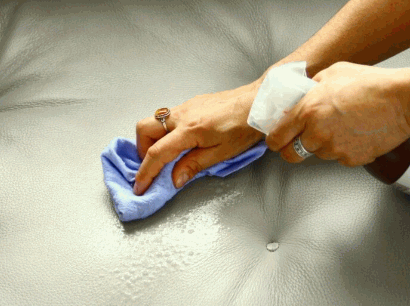
Step 4: Clean The Couch
Using a soft cloth or sponge, gently clean the entire leather sofa with the prepared solution. Work in small sections, applying light pressure to remove dirt and stains effectively. Ensure thorough coverage of the surface while avoiding oversaturation.
Remember to focus on areas that tend to accumulate more dirt, such as armrests and headrests. Wipe down the leather gently in a circular motion, being careful not to scrub too forcefully. It’s essential to let the sofa air dry naturally after cleaning to prevent any damage from excessive moisture.
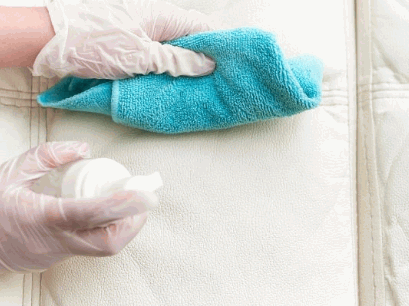
Step 5: Rinse The Couch
After cleaning the leather settee with the solution, use a damp cloth to rinse off any remaining cleaner residue. Wipe the surface gently to remove excess soap or dirt, ensuring a clean and refreshed appearance before proceeding to the next step in the cleaning process.
Rinsing the leather settee is a crucial step in maintaining its quality and longevity. By thoroughly rinsing off any leftover cleaning solution, you prevent potential damage that may occur if the chemicals are left on the surface. Proper rinsing helps to eliminate any soap residue that could attract dust or dirt, keeping your settee looking pristine for a longer period.
Step 6: Dry The Couch
Once the leather sofa is cleaned and rinsed, allow it to air dry naturally in a well-ventilated area. Avoid using heat sources or direct sunlight for drying, as they can damage the leather. Ensure that the sofa is completely dry before proceeding with any dyeing or conditioning treatments.
Leather is a delicate material that requires gentle care to maintain its beauty and longevity. Rushing the drying process can lead to cracks, stiffness, or discoloration in the leather. To prevent any of these issues, patience is key when it comes to air drying your sofa.
If you’re in a hurry, you can use a gentle fan to increase air circulation but never resort to using a hairdryer or heater. Remember, a slow and steady drying process ensures that your leather sofa remains in top condition for years to come.
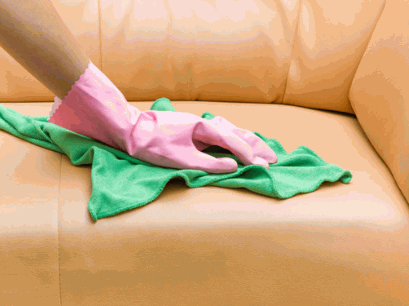
What Are The Best Cleaning Solutions For Leather Couches?
In terms of cleaning leather sofas effectively, there are several recommended solutions that cater to different cleaning needs. From specialised leather cleaners to DIY natural solutions, selecting the best cleaning product depends on the type of leather and the level of cleaning required.
Specialised leather cleaners are specifically formulated to maintain the texture and finish of the leather, ensuring thorough cleaning without causing damage. They often contain gentle yet effective ingredients that target dirt and stains while conditioning the leather to prevent drying and cracking over time.
On the other hand, natural alternatives like homemade vinegar or olive oil solutions can offer a more eco-friendly option for regular maintenance. These DIY cleaners are gentle, cost-effective, and safe for the environment, making them a popular choice among those seeking a greener cleaning approach.
Leather Cleaner
A dedicated leather cleaner is a popular choice for effectively cleaning leather sofas without causing damage or residue. These specialised products are formulated to lift dirt, oils, and stains from the leather surface while maintaining the material’s natural characteristics and finish.
One of the advantages of using a dedicated leather cleaner is that it helps to preserve the softness and suppleness of the leather, keeping it looking and feeling luxurious for longer periods of time. Leather cleaners also typically contain conditioning agents that nourish the leather, preventing it from drying out and cracking over time. These products often offer UV protection, helping to shield leather from harmful sun damage that can cause fading and deterioration.
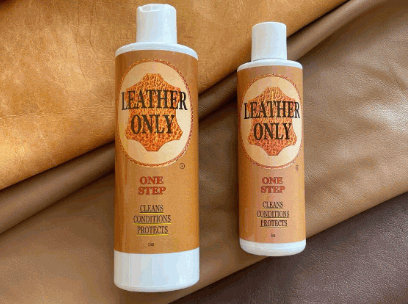
White Vinegar Solution
A white vinegar solution is a cost-effective and natural alternative for cleaning leather settees. When diluted with water, white vinegar can effectively remove dirt and mild stains from the leather surface, leaving it clean and refreshed without harsh chemicals or residues.
The acidic nature of white vinegar helps break down grease and grime, making it ideal for tackling tough stains on leather. Not only does it clean effectively, but it also helps to condition and preserve the leather, keeping it soft and supple.
- To prepare a solution, mix equal parts of white vinegar and water in a spray bottle.
- Lightly spray the solution on a soft cloth and gently wipe the leather in circular motions.
- Remember to test a small, inconspicuous area first to ensure compatibility.
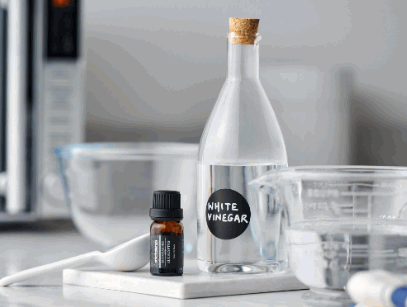
Mild Soap Solution
A mild soap solution, such as a gentle dish soap diluted in water, can be an effective option for cleaning leather settees. This solution helps remove surface dirt and grime without damaging the leather, providing a safe and simple cleaning method for regular maintenance.
When preparing a mild soap solution for your leather settee, it’s important to ensure that the soap is thoroughly diluted in water to avoid any unwanted residue left on the leather surface. Test the solution on a small inconspicuous area first to check for any adverse effects before applying it to the entire settee. Use a soft cloth or sponge to gently apply the solution in circular motions, focusing on one section at a time to ensure even cleaning.
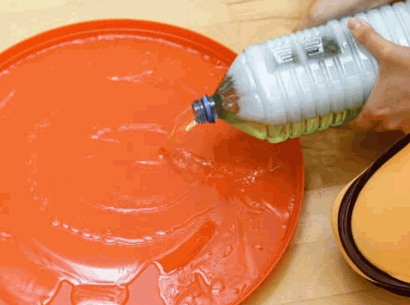
Are There Any Alternative Methods To Clean Leather Couches?
Along with traditional cleaning solutions, there are alternative methods to clean leather sofas using common household ingredients. These DIY approaches offer natural and cost-effective ways to maintain the cleanliness and appearance of your leather furniture without strong chemicals.
One advantage of choosing natural cleaning methods for your leather sofa is that you can avoid exposing your furniture to harmful synthetic substances. By using ingredients such as vinegar, olive oil, or bicarbonate of soda, you not only ensure a thorough clean but also contribute to eco-friendly practices in leather care.
Natural cleaning solutions are known to be gentle on leather, preserving its flexibility and shine. When compared to commercial cleaners that may contain harsh components, these DIY alternatives help prolong the life of your leather sofa while keeping it looking its best.
Baking Soda And Water Solution
A mixture of bicarbonate of soda and water can serve as a non-abrasive cleaning solution for removing stains and odours from leather settees. This natural remedy helps lift dirt and refresh the leather surface, providing a gentle and eco-friendly cleaning option for regular maintenance.
For an effective cleaning solution, begin by creating a paste from a mixture of bicarbonate of soda and water. Be mindful of the ratio – a general guideline is to mix one part bicarbonate of soda with three parts water to form a thick paste.
After preparing the paste, use a soft cloth or sponge to apply it to the affected areas on the leather settee. Ensure you cover the entire stain for a thorough cleaning process.
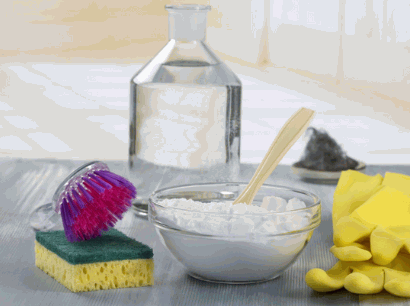
Lemon Juice And Cream Of Tartar Paste
A paste made from lemon juice and cream of tartar can act as a natural cleaning solution for tough stains on leather settees.
This homemade paste helps break down grime and lift stains from the leather surface, offering a chemical-free and effective cleaning method. Combining the acidic properties of lemon juice with the abrasive nature of cream of tartar creates a powerful cleaning agent that is gentle on leather yet tough on stains.
To prepare the paste, simply mix equal parts of lemon juice and cream of tartar in a small bowl until a thick consistency is achieved. Then, using a soft cloth or sponge, gently apply the paste to the stained areas of the leather settee. Allow the paste to sit for a few minutes before gently wiping it off with a clean, damp cloth.
This natural cleaning solution not only helps remove stubborn stains but also leaves the leather moisturised and conditioned, preserving its longevity and beauty.
Rubbing Alcohol Solution
A surgical spirit solution can be used to disinfect and clean leather sofas, particularly for removing bacteria and germs. When applied sparingly and with care, the surgical spirit can help sanitise the leather surface without causing damage or discolouration.
It is essential to dilute surgical spirit properly before use, ensuring it does not harm the leather. Testing a small, inconspicuous area of the sofa first will help determine its compatibility with the material. Using a soft cloth dampened with the surgical spirit solution, gently wipe the leather in a circular motion.
For tough stains, a mixture of surgical spirit with water and mild soap can be effective. Always remember to let the leather dry naturally and avoid exposing it to direct sunlight or heat sources. Regular maintenance with surgical spirit can extend the lifespan of your leather sofa while keeping it clean and germ-free.
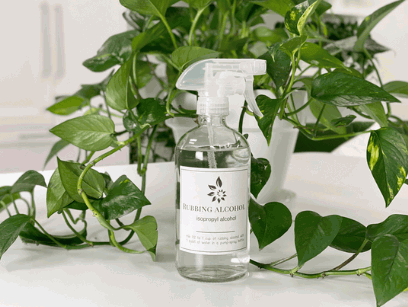
What Precautions Should You Take When Cleaning Leather Couches?
When cleaning leather settees, it is important to take certain precautions to avoid damaging the leather or compromising its quality. By following specific guidelines and using gentle cleaning techniques, you can ensure that your leather furniture remains in optimal condition throughout the cleaning process.
One crucial precaution to keep in mind is to always test any cleaning products or solutions on a small, inconspicuous area of the settee first to check for any adverse reactions. This step ensures that the chosen cleaner is safe and compatible with the leather.
- It is recommended to use a mild soap or specially formulated leather cleaner to avoid harsh chemicals that can strip the leather of its natural oils and moisture.
- When applying the cleaner, use a soft, damp cloth rather than abrasive scrubbing tools to prevent scratches or damage to the leather surface.
- After cleaning, it is important to condition the leather to restore its suppleness and maintain its longevity. Choose a high-quality leather conditioner and apply it according to the manufacturer’s instructions.
Test The Cleaning Solution First
Before using any cleaning solution on the entire leather sofa, always carry out a patch test on a small, inconspicuous area. This test helps determine the compatibility and effectiveness of the cleaner without risking damage to the entire leather surface.
To conduct a patch test correctly, begin by selecting an area like the back or bottom of the sofa, where any potential discolouration or damage won’t be noticeable. Apply a small amount of the cleaning solution to a clean cloth and gently rub it into the selected area. Allow it to dry completely and check for any adverse reactions such as discolouration, swelling, or changes in texture. If the test area remains unchanged after 24 hours, you can proceed to use the cleaning solution on the entire sofa with confidence.
Use Gentle Cleaning Techniques
When cleaning leather sofas, always use gentle techniques to avoid scratches or damage to the material. Use soft cloths, sponges, or brushes with gentle pressure to remove dirt and stains without harming the leather finish, ensuring a thorough yet gentle cleaning process.
It’s advisable to use leather-specific cleaning products that are designed to maintain the flexibility and shine of the material. Avoid strong chemicals or abrasive tools that can remove the natural oils and protective layers of the leather.
Moreover, regular maintenance is essential for preserving the longevity of your leather furniture. Wipe your sofa regularly with a damp cloth to prevent dirt accumulation and then apply a leather conditioner to keep the material moisturised and resistant to cracking.
Avoid Harsh Chemicals
To protect the quality and longevity of your leather sofa, steer clear of harsh chemicals during the cleaning process. Avoid using strong solvents, bleach, or abrasive cleaners that can strip the leather of its natural oils and finish, leading to potential damage and discoloration.
Instead, opt for gentle, natural cleaners that are specifically formulated for leather care. Leather conditioner is a great alternative, as it helps to maintain the suppleness and shine of the leather, while also providing essential nourishment to prevent drying out.
Regular dusting and gentle spot cleaning with a soft, damp cloth can go a long way in preserving the beauty and integrity of your leather sofa.
Remember, prevention is key when it comes to leather care; so, investing a little time in regular maintenance will pay off in the long run, keeping your sofa looking luxurious for years to come.



